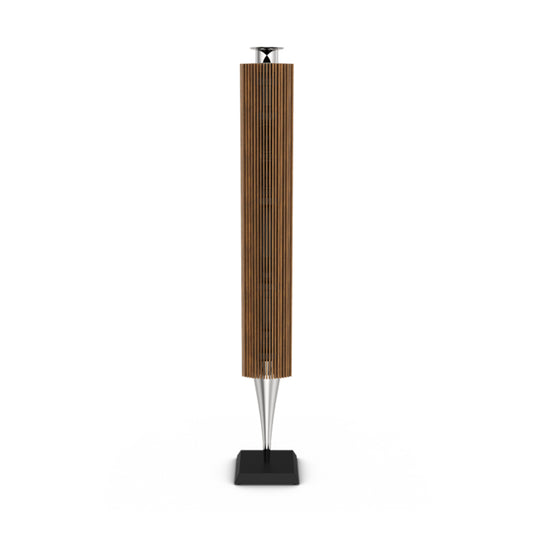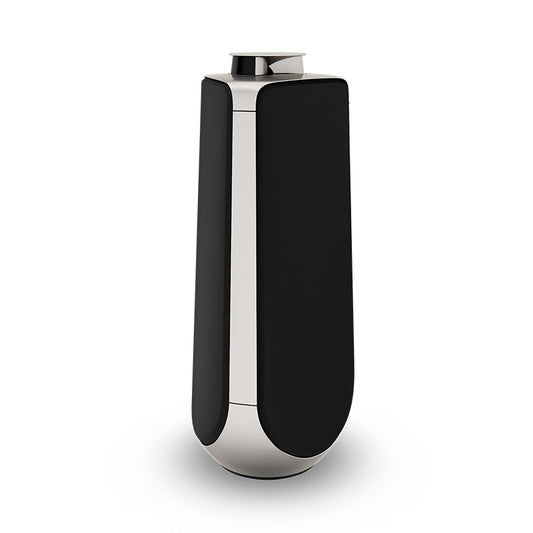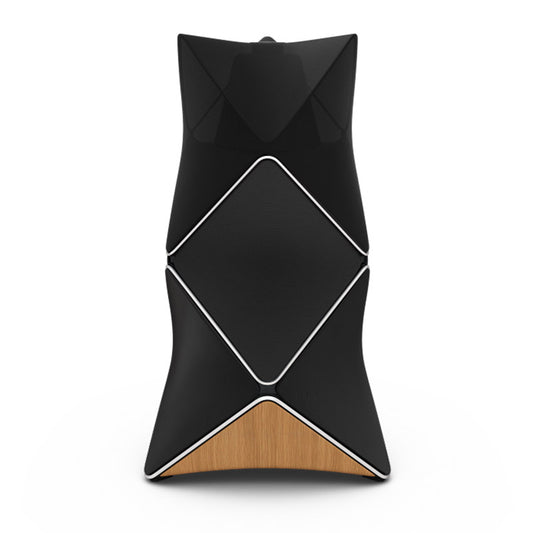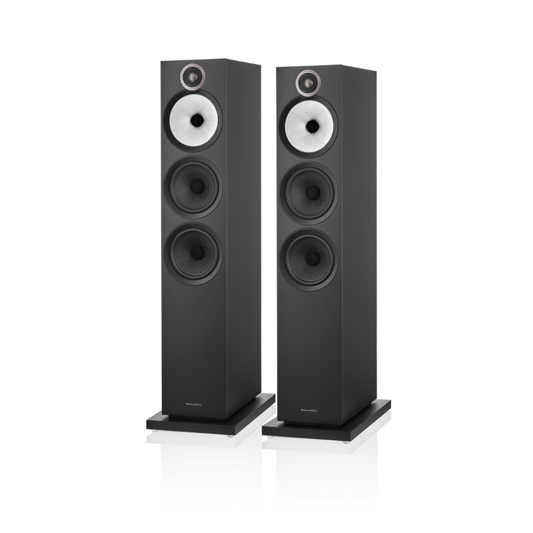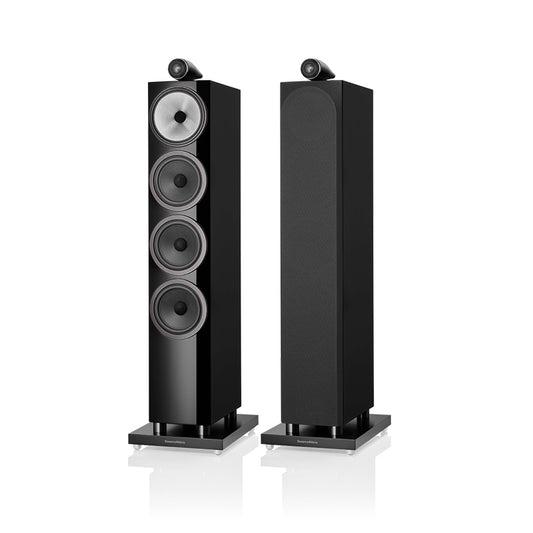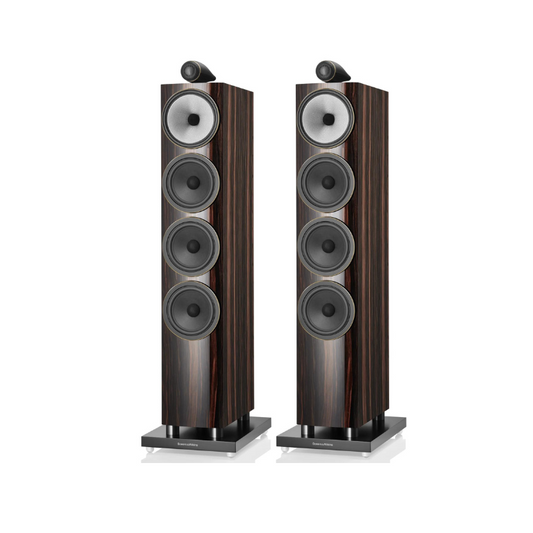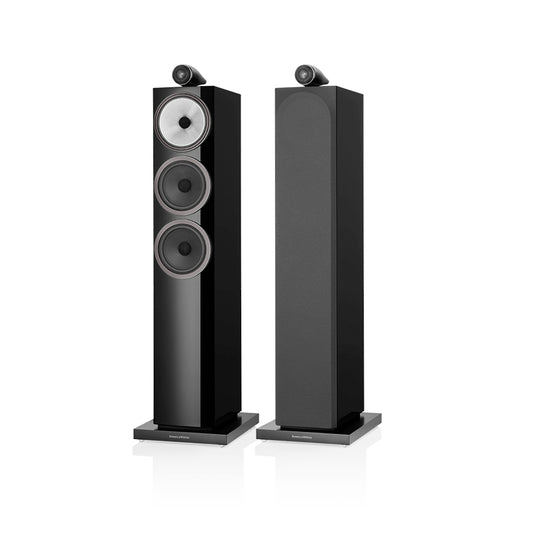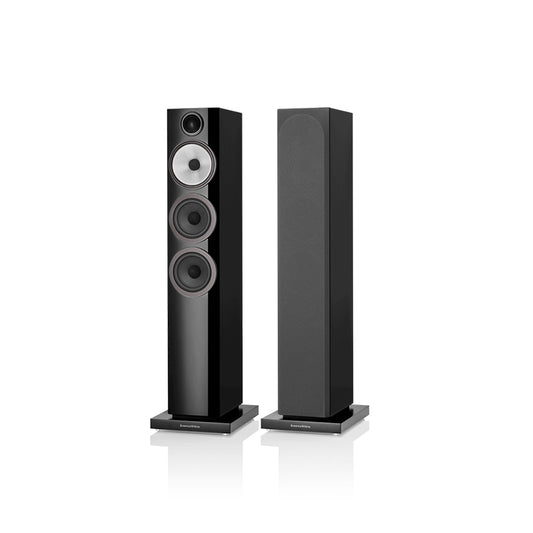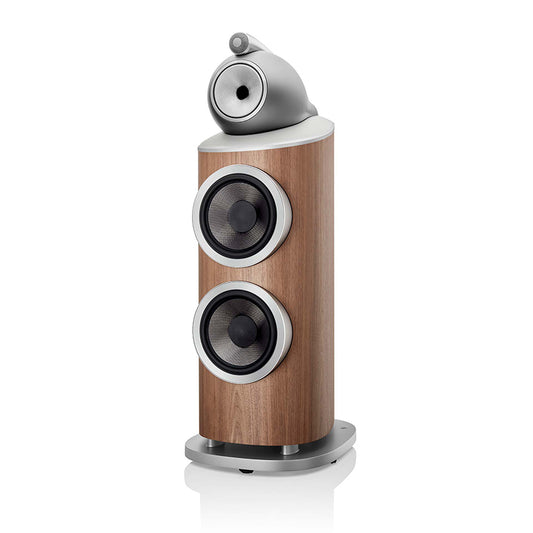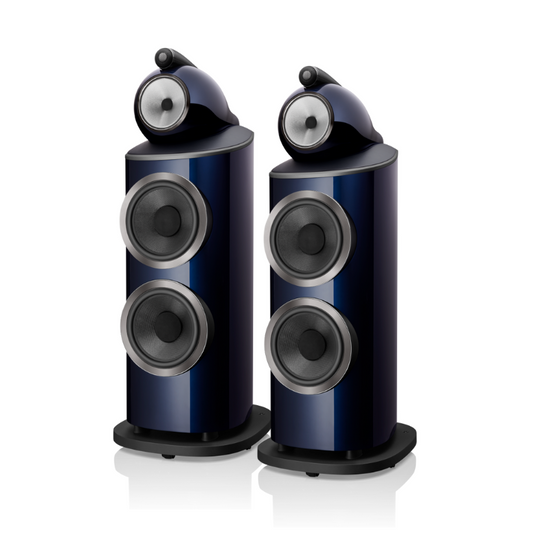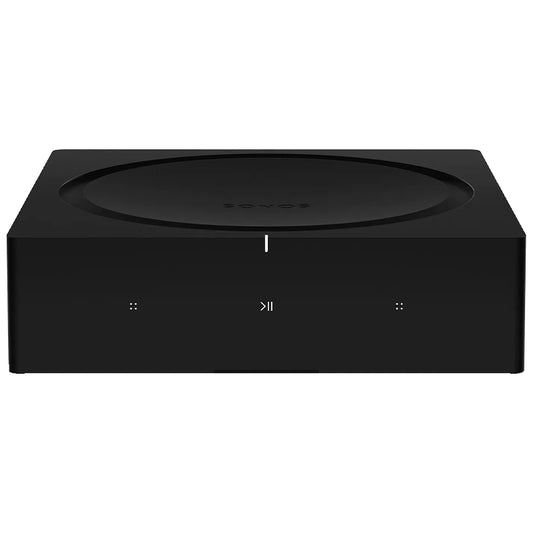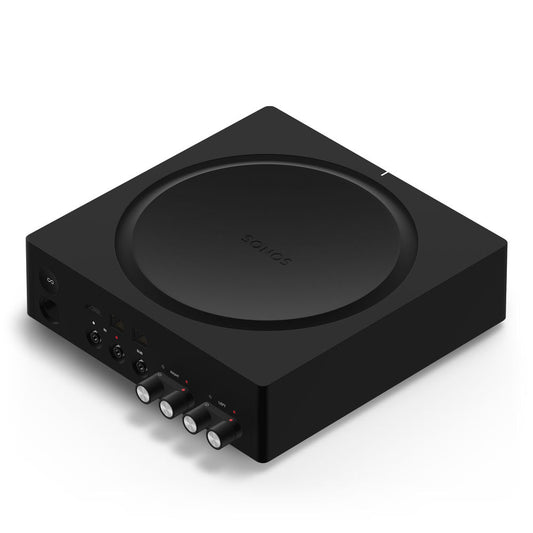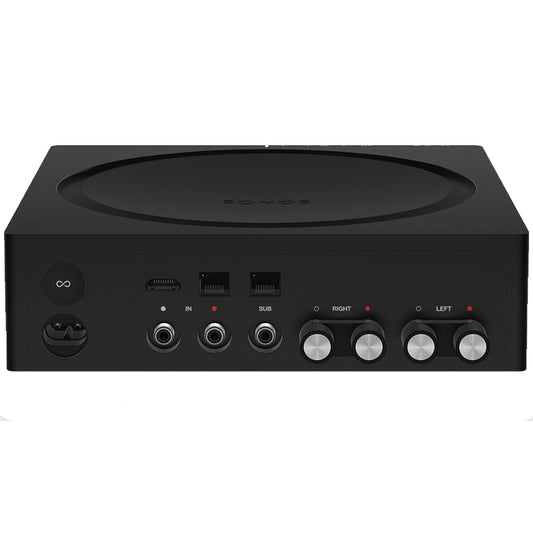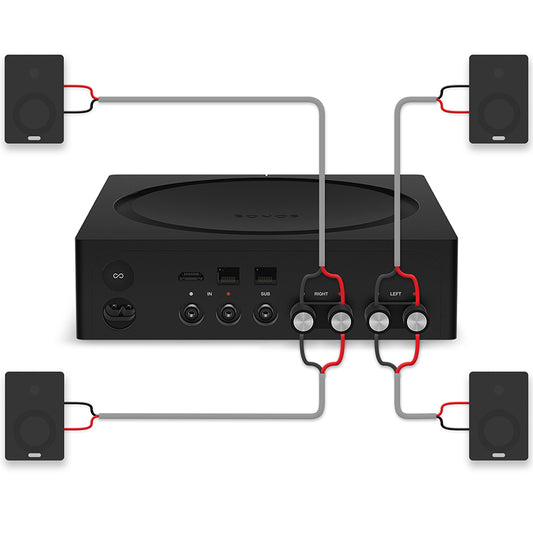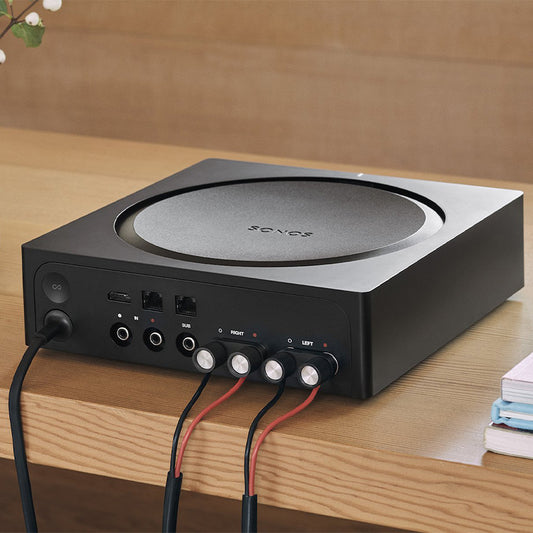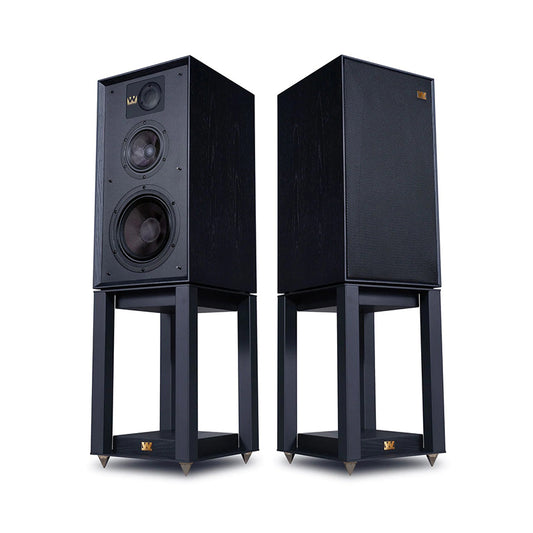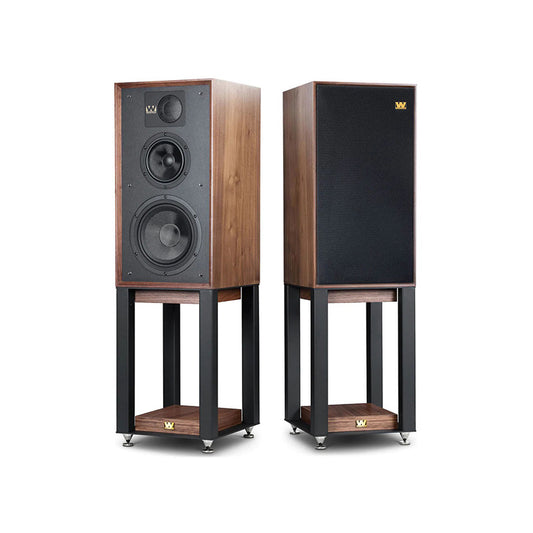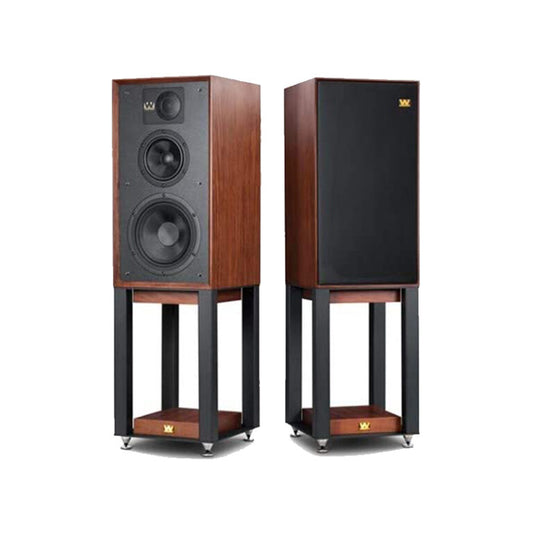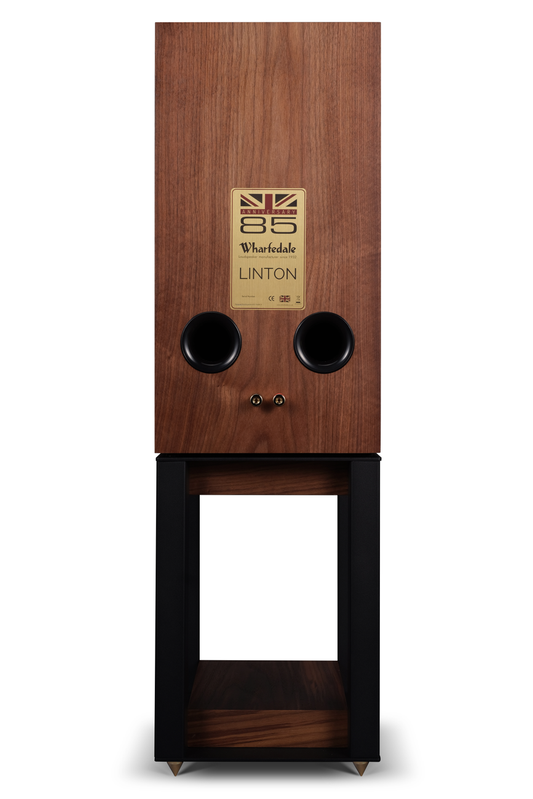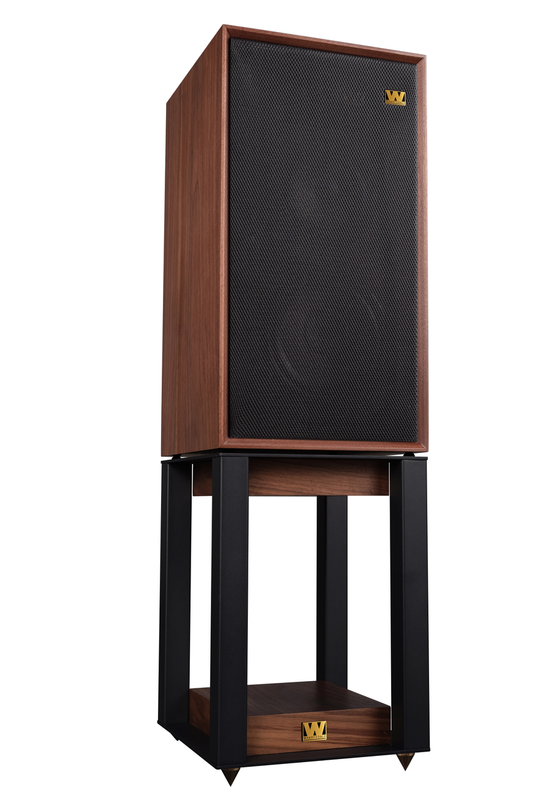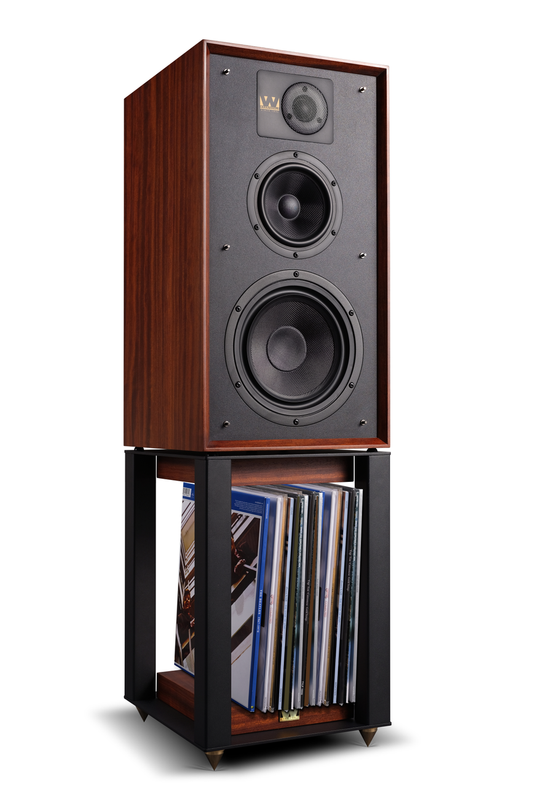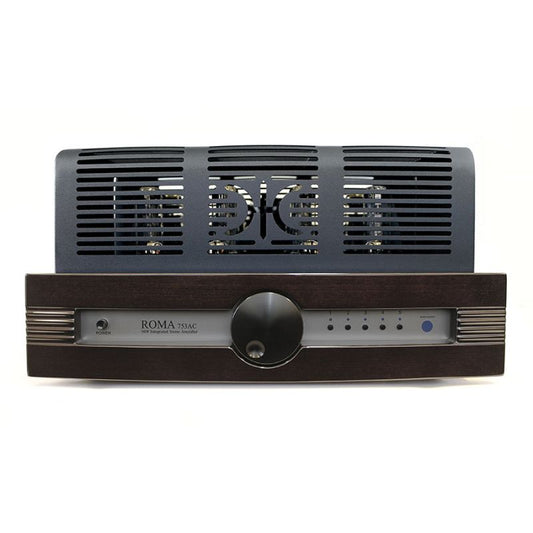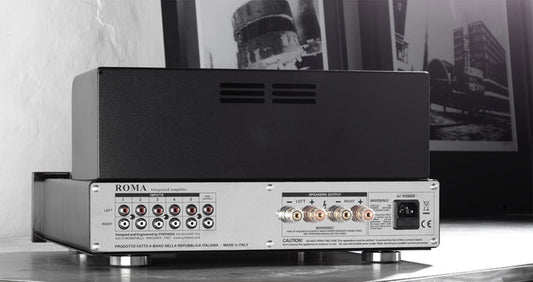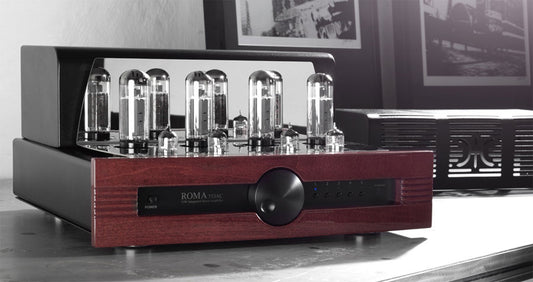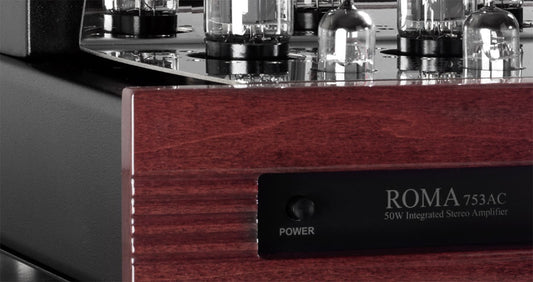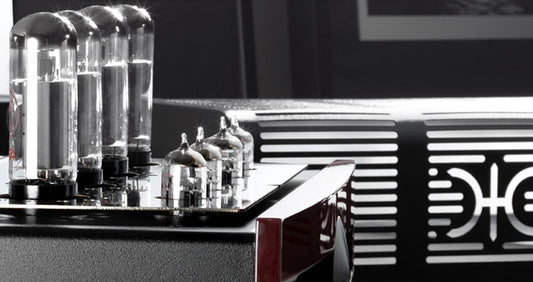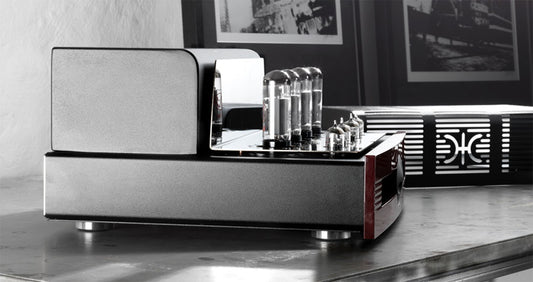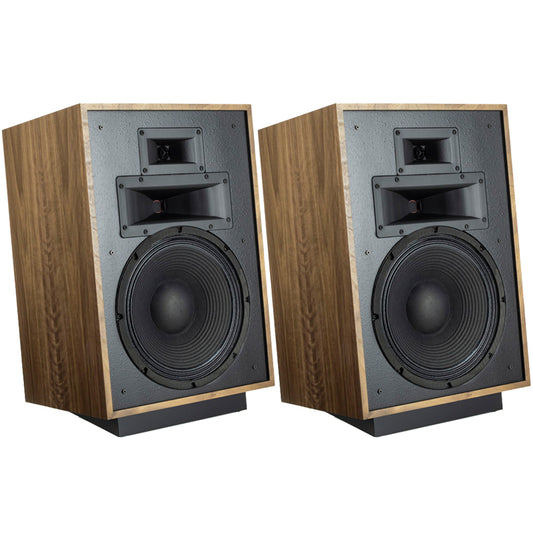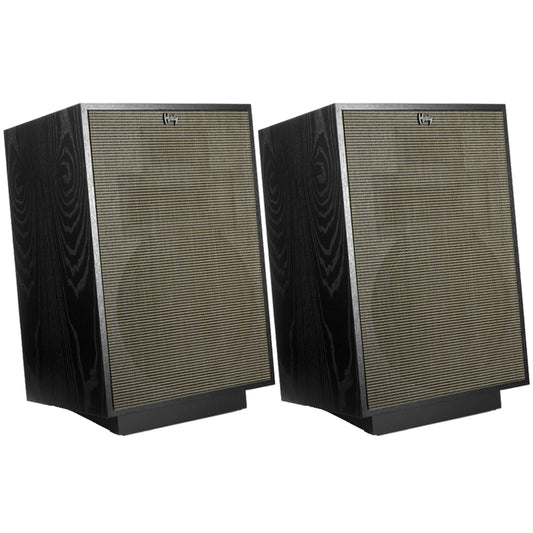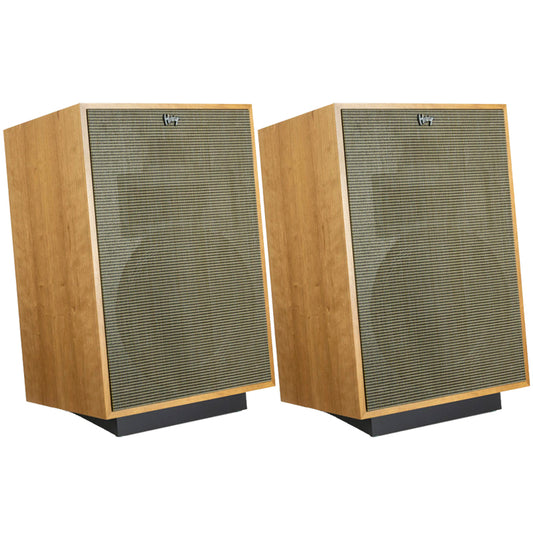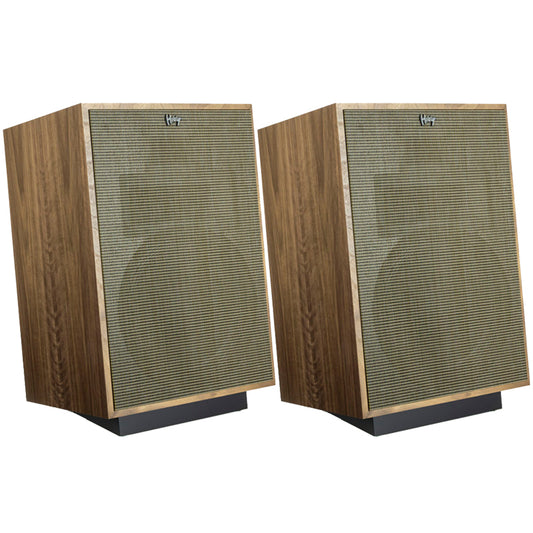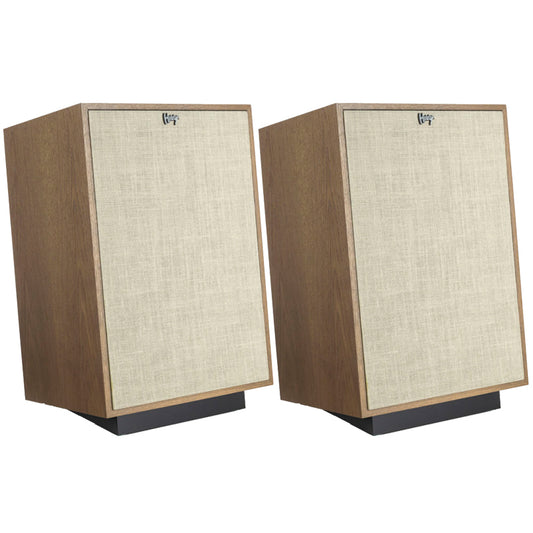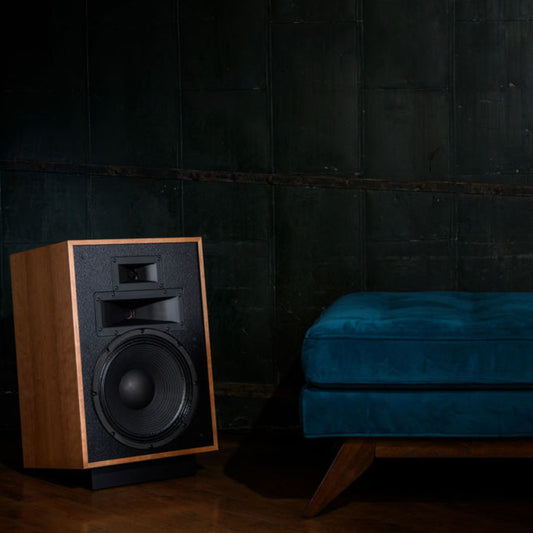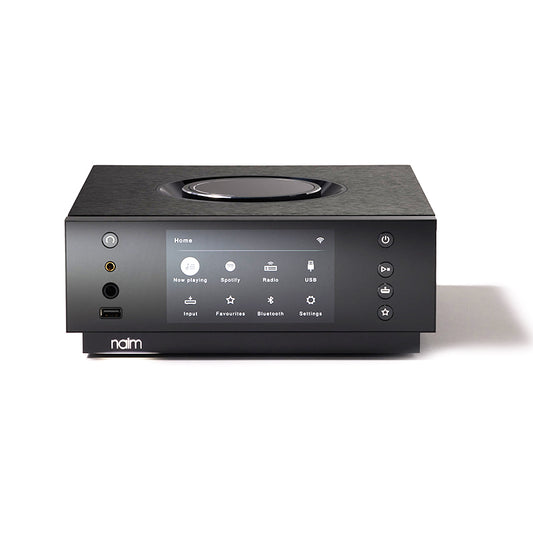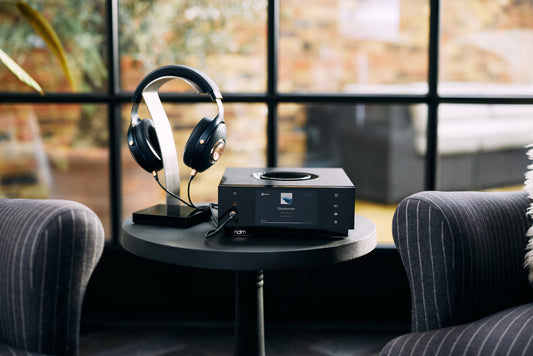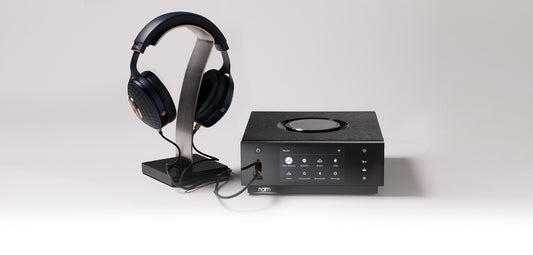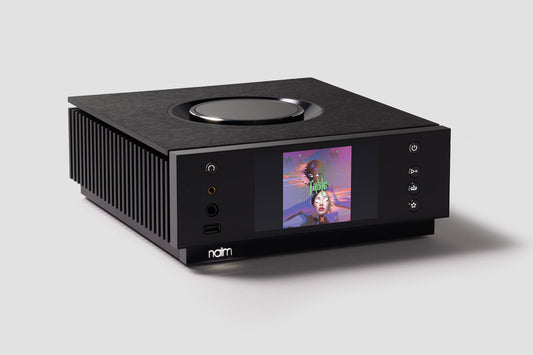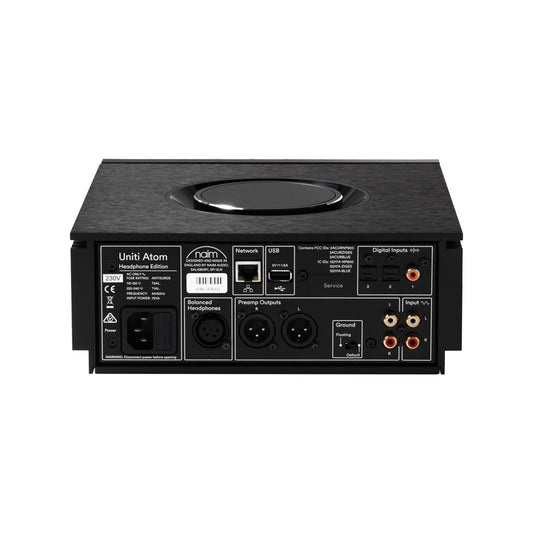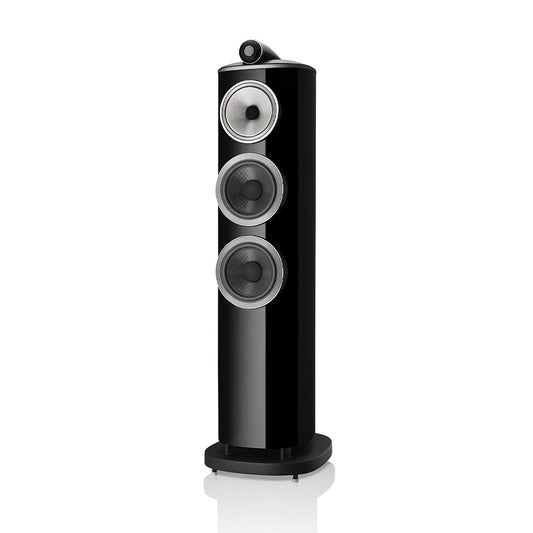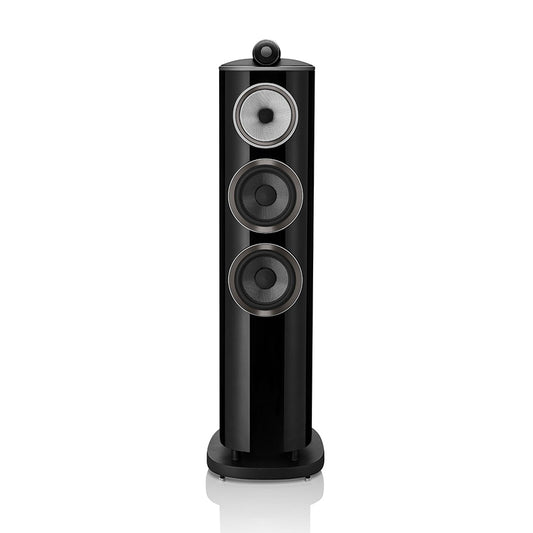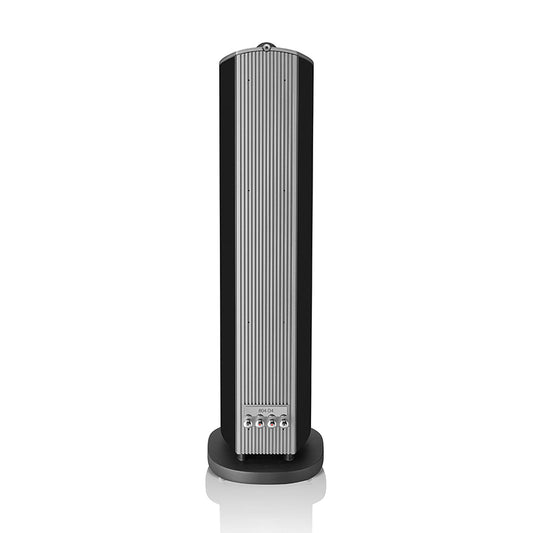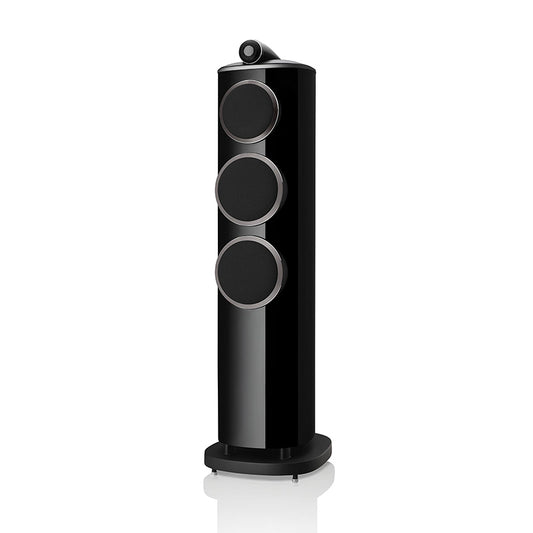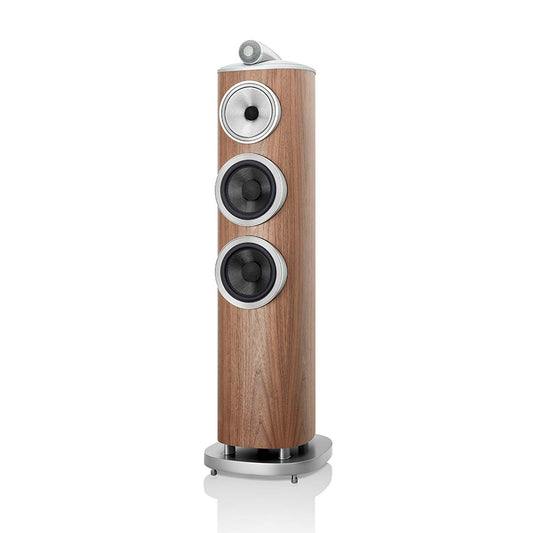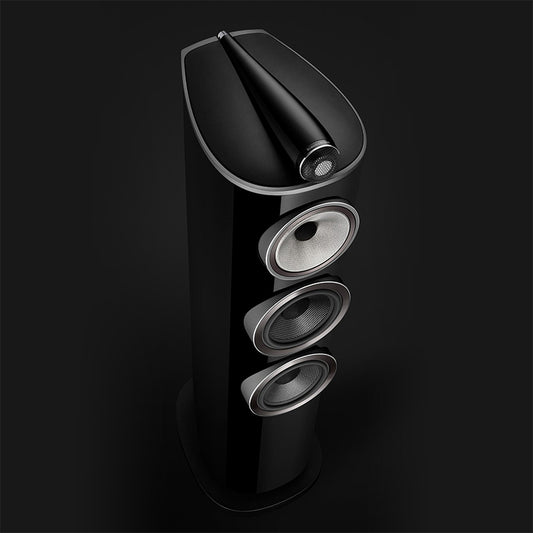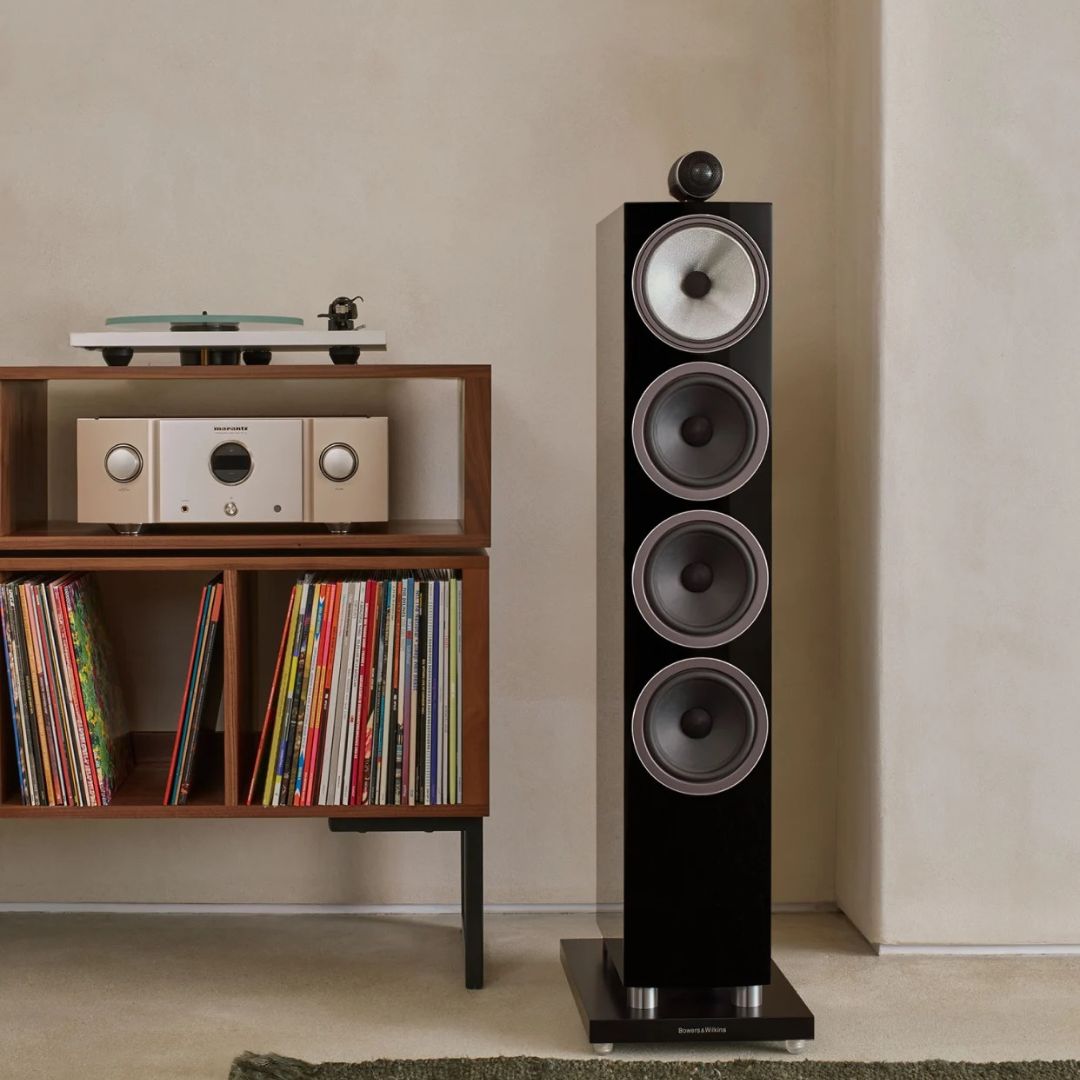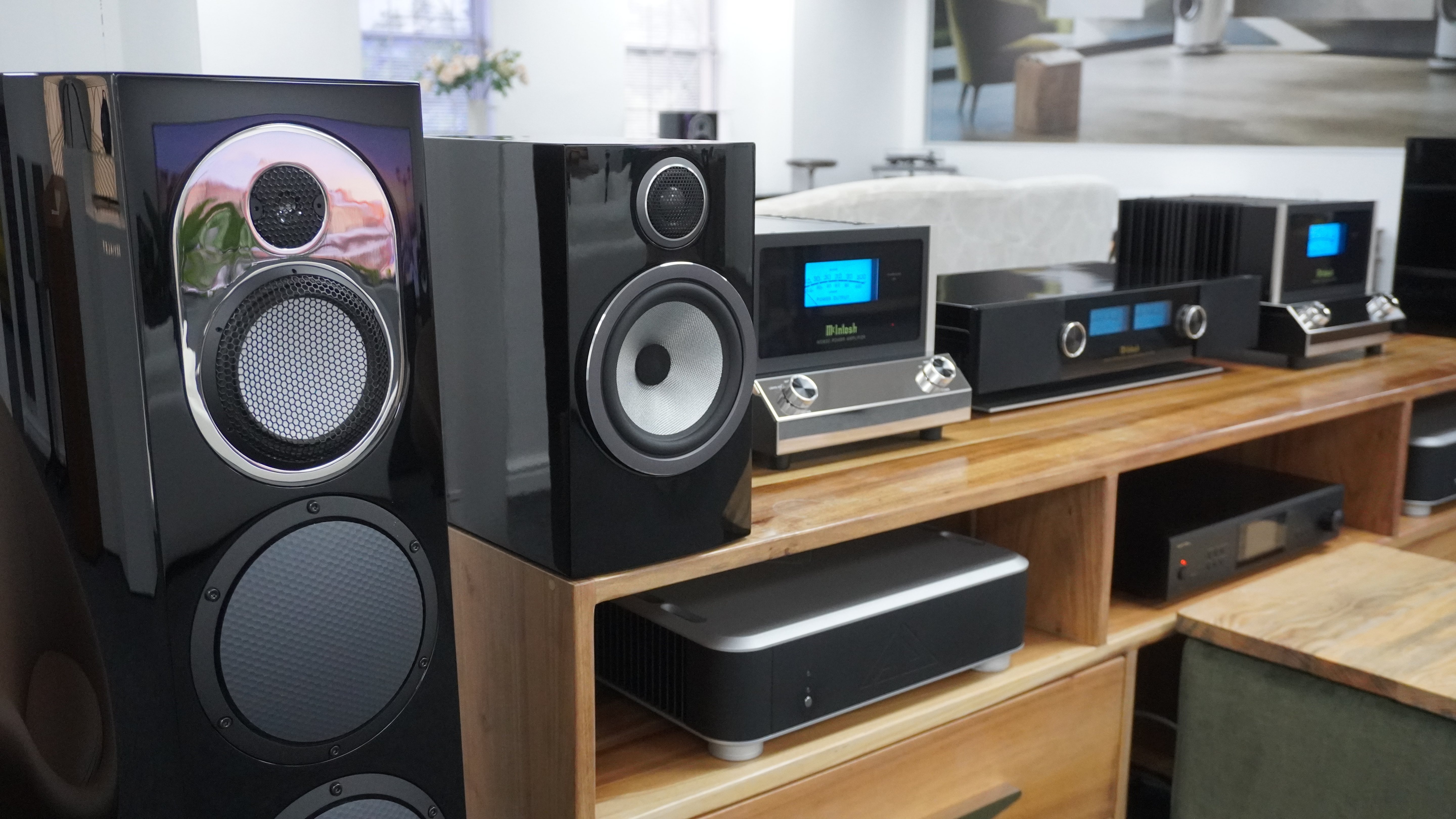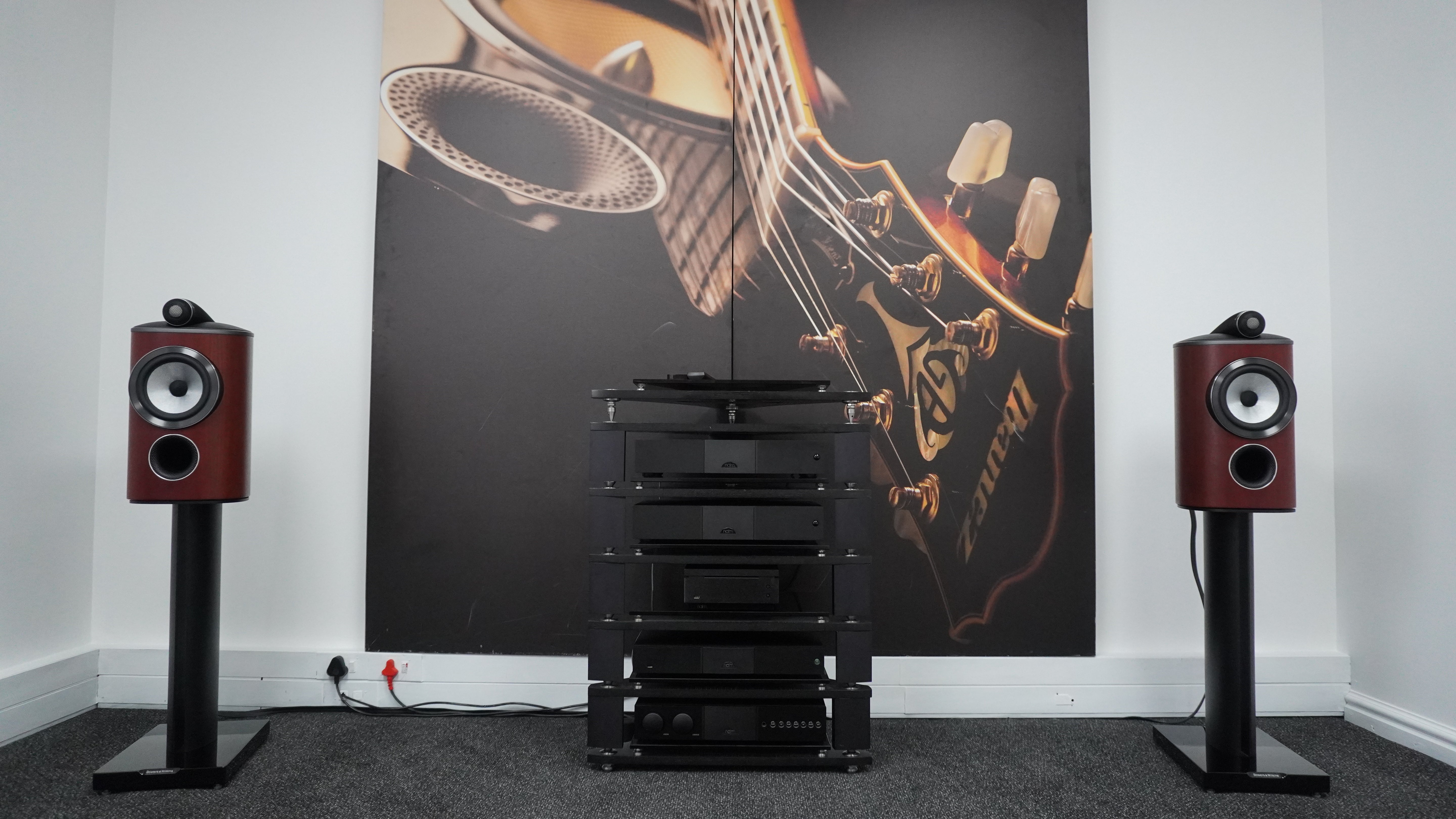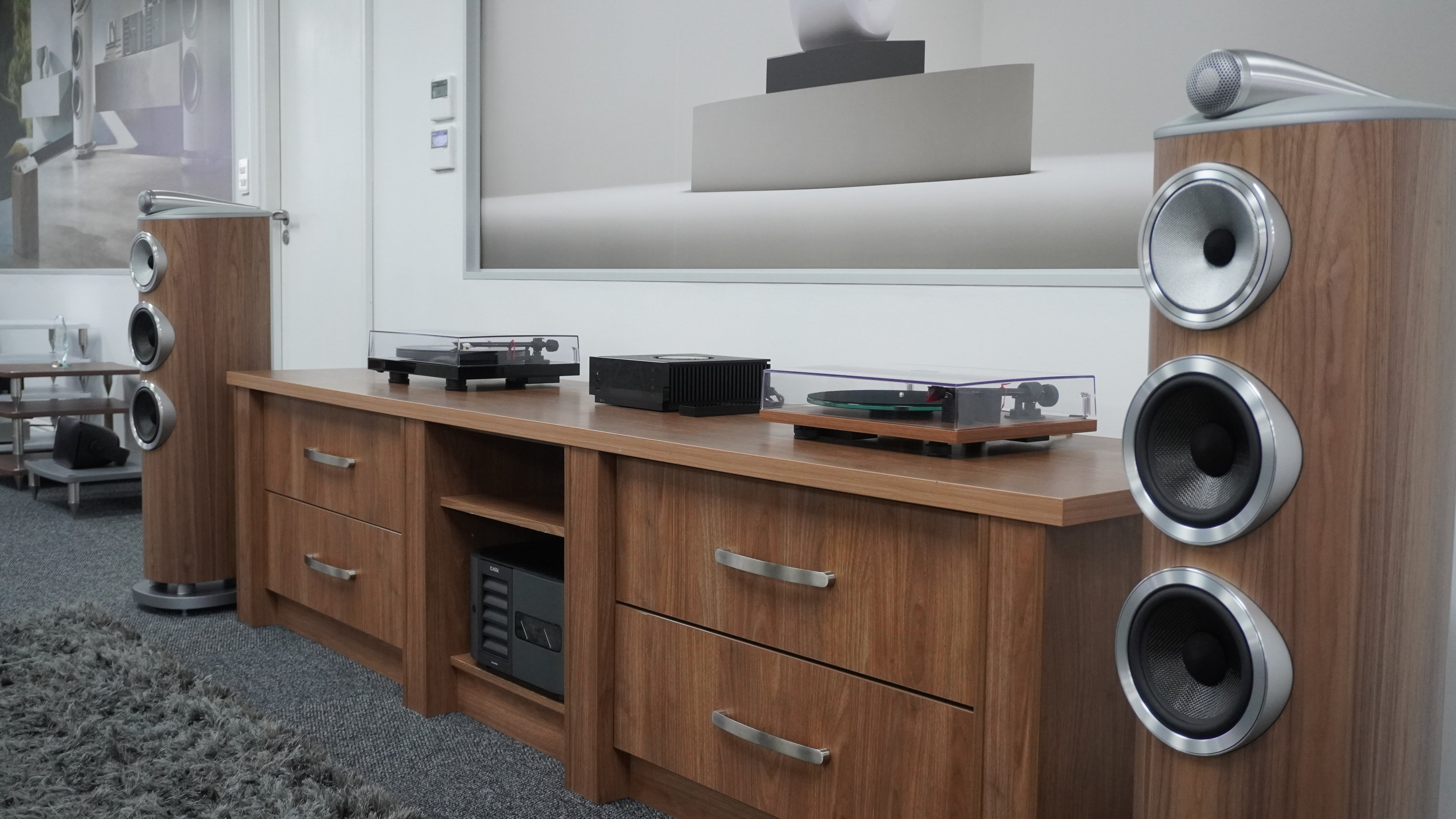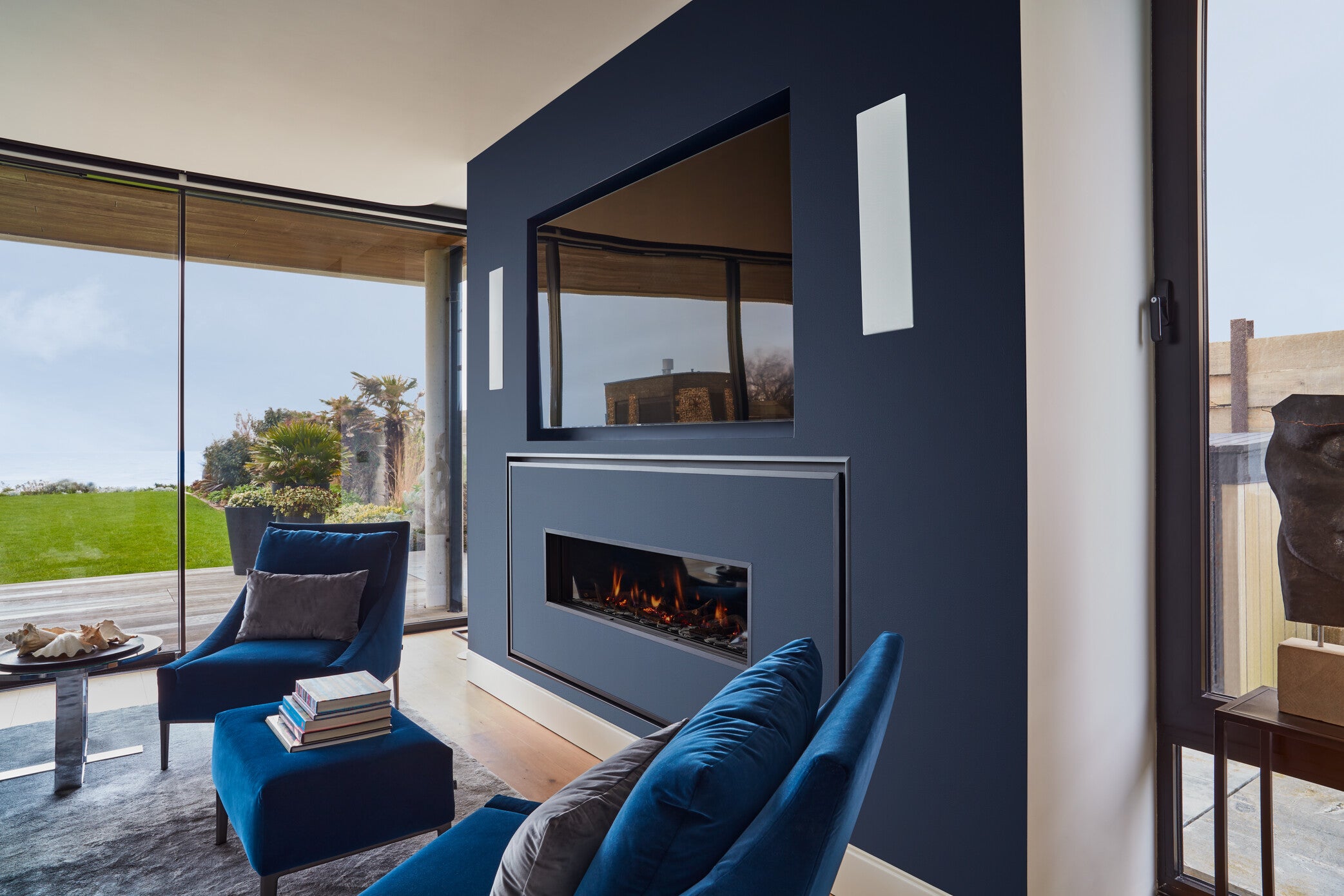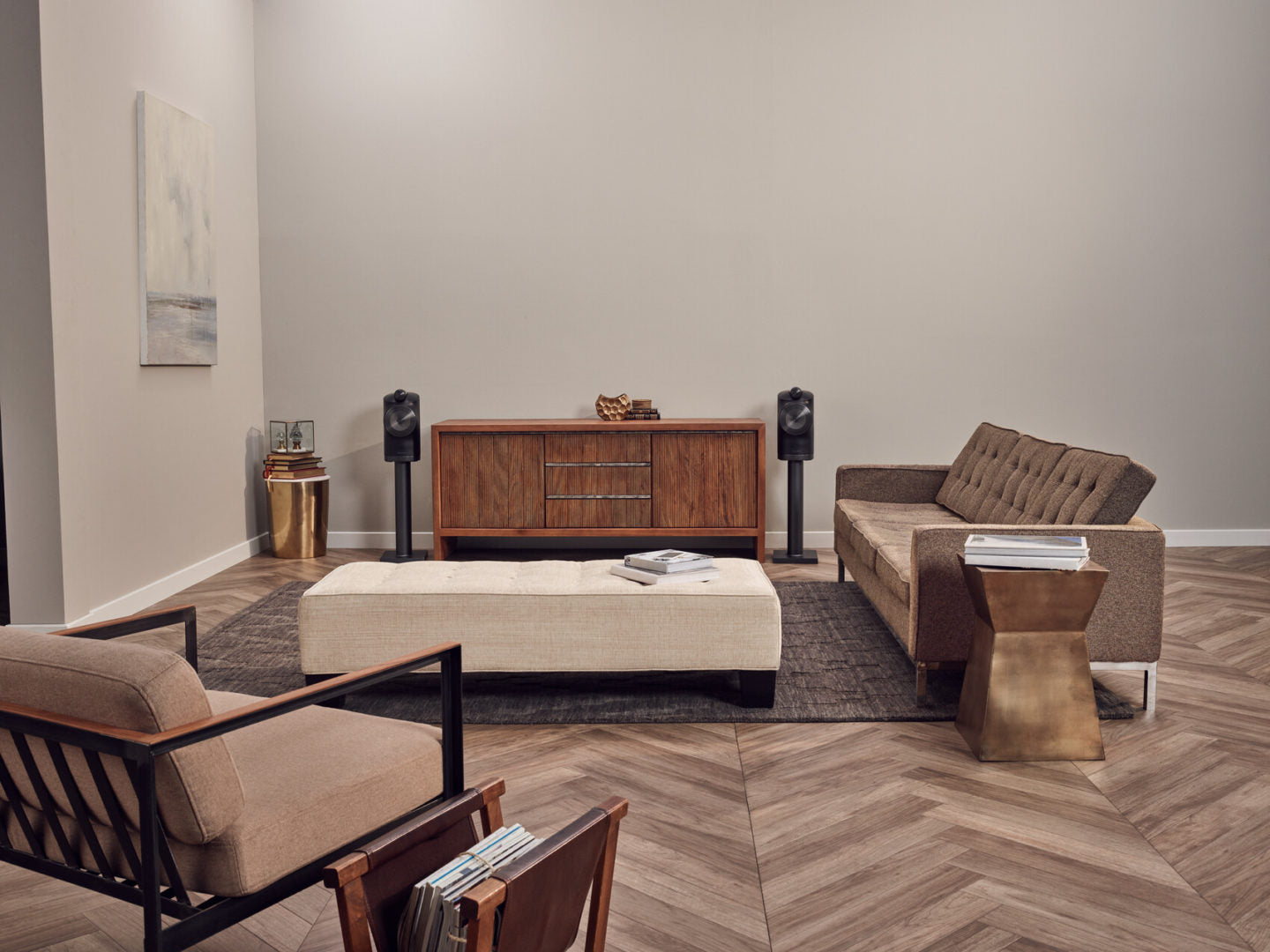PUSHING THE ENVELOPE
“In most loudspeakers, the bass section determines performance, as far as the laws of physics will allow.
A cone moving this far at this frequency will supply so many dBs and no more. The length of the linear electromagnetic ‘push’ is set by the length of the voice coil and magnetic gap. Not far behind is the suspension design which eventually pulls tight and stops further movement.
Therefore, to increase the volume of air being moved, you must increase the cone area. Every doubling in cone area creates three more dBs, or, for the same level, a halving of the cone excursion.
The more cone area you can have, the smaller the cone displacement and the easier the loudspeaker has it – hence ‘effortless’.
With its 45mm magnetic gap, the C225 driver is no slouch but reducing the excursion by a factor of eight through the use of eight drivers means that they’re just ticking over while you enjoy a massive auditory slam.”
![]()
POWER IS NOTHING WITHOUT CONTROL
Opening the throttle of a powerful car as you go into a racetrack curve; hitting the high notes in a trumpet solo; the muscular thrust skyward of a world-class ballerina. All need raw power, but every application of power requires finesse too. Sometimes, measuring the smallest things entails the largest machines.
Without control and refinement, power is just an unruly force. Any large loudspeaker can play loud, but that’s only part of its purpose. The listener must also be able to pick out the subtlest detail from the hullabaloo of an orchestral crescendo or hear an exclamation of appreciation in the midst of an explosive drum solo.
Moya M1 delivers this precision to the Nth degree, while also being able to reproduce rock concert levels of sound in your living room. From an organ symphony on a huge Cavaillé-Coll instrument to low-end bass from a 90s house anthem, the Moya M1 delivers audio thrills at every octave.

WHEN EIGHT IS MORE THAN ENOUGH
A casual glance at the Moya M1 and one thing registers immediately: the eight imposing bass drivers. But why eight drivers? It all comes down to efficiency and power handling.
Compared to the two C225s of our Giya G1 Spirit model, Moya features four times the driver complement, which equates to an extra 6db of efficiency. In Moya we chose to use some of that gain to push the low frequency extension below 20Hz.
When the voice coil runs out of magnetic road it manifests in obvious distortion. But something less obvious is also happening. The power going into the coil also heats it up, causing resistance to rise and efficiency to drop – as much as 6dB if the coil gets up to 230°C. Now a subtle degradation of the loud passages creeps in. And a tired speaker creates a dull listening experience.
Keeping a check on power compression calls for a large area of voice coil, hence a large diameter coil. Eight drivers, each with a 100mm voice coil, is the same as having 400mm voice coils on a pair of drivers. Even the most powerful 21 inch drivers have no more than a 150mm voice coil, let alone 400mm.
MASTERING THE SEQUENCE
The next question was which driver to put next in the sequence. The C125-75 midrange, used in our G1S speaker, is a great driver but would be excursion limited down to 400Hz to keep up with the immense output of the lower frequency.
Alternatively, taking the eight bass drivers up to 400Hz would be pushing the limits of what was reasonable for such a large array. Clearly, another frequency band was needed to bridge the gap, necessitating a complex five-way crossover and the addition of a pair of C175 bass/mid drivers.
Using computer-aided network analysis and optimisation, in conjunction with ideally-behaved drivers, a seamless five-way dividing network was perfectly achievable.
Now the delicate balance of highs, lows and mids was perfectly harmonised – for an optimal experience that will reveal new details from your record collection at every listening session.
TWEETERS MINING MATERIAL GAINS
Exotic tweeter dome materials appeared in the audio world as far back as the 1990s. Noting the trend, Vivid Audio weighed the choices and made a pivotal decision.
Blending the rigidity of carbon fibre with an aluminium dome crafted into a catenary shape, we achieved a measured response that rivalled the performance of rare and costly beryllium, while delivering subjective results that surpassed even diamond tweeters.
One key advantage of our reinforced aluminium dome over diamond lies in its lower mass. Creating a reliable diamond shell requires a 100-micron-thick layer deposit. When combined with diamond’s increased density over aluminium, it results in a moving mass three times greater than that of aluminium.
It is fundamental to the effortless sound reproduction for which Vivid Audio loudspeakers are now renowned.
A LAYER OF BLACK MAGIC

While the outstanding performance of our D26 tweeter is undisputed, we never cease trying to elevate tweeter performance to new levels. This requires constant evaluation of new materials and coatings.
Increased stiffness is always the primary goal but enhanced damping of break-up modes is an added bonus. The contrasting properties between the DLC and the aluminium substrate heightened shear losses and significantly dampened the ‘Q’ of the break-up.
Both the D50 upper mid-frequency driver and D26 high-frequency driver benefit from the DLC, but the enhancements to the new series of drivers extends further.
While the magnets used in our standard drivers have an energy content of 35MGOe, material with an energy of 52MGOe is now possible.
MID RANGE A COMMANDING PERFORMANCE
Occupying the all-important mid-range spotlight is our venerable C100SCu mid-driver. This unit is a reliable soldier for the critical space on the audio spectrum where the demands of soprano vocals and violin strings must be met.
In honour of its new position in the centre of the Moya M1 baffle, its already stellar performance is now further enhanced with high-energy magnet material and a high-purity copper shield over the central pole.
This stabilises the magnetic flux in the face of the influence of the musical signal, yielding extended highs and dramatically reduced distortion.
Adding three carbon fibre rings to the cone assembly produces a notable increase in the break-up frequencies, placing an even safer margin between them and the uppermost extent of the working band – the top C6 of the soprano’s vocal range.
AN AGILE PARTNER
The C175 now finds itself in a new role covering the low mid-band between 125Hz and 550Hz. While not being called upon to reproduce the lowest bass, this agile driver is ideally suited to delivering those chest-rattling drum notes with impact and urgency.
Formerly underpinning the bottom octaves of our Giya G2 loudspeaker, the C175 has long-term power handling in abundance, essential in a band where so much of the fundamental energy of strings and vocals is centred.
Two exponentially-tapered partitions extending the full height of the enclosure ensure the complete annihilation of parasitic eigen-resonances, resulting in fantastically accurate transients in the band that is responsible for so much of the system’s impact.

BASS DRIVERS ROCKING THE FOUNDATIONS
The Moya M1 bass array is one feature you can’t miss. Eight legendary C225-100H drivers, each one capable of handling 800W, arranged in a new high-shove configuration. An awesome display of power!
The C225 uses a radially polarised magnet structure, in this case twelve 45mm-long segments of high energy rare-earth magnet in an 11kg lump of high-purity steel. Wound on a virtually indestructible glass-reinforced former, capable of handling over 300°C, the edge-wound copper-ribbon voice coil can take extreme power in its stride.
Each pair of drivers is arranged in a horizontally-opposed configuration on either side of the bass module, with magnets united by a substantial steel tie-bar to completely eliminate reaction forces and the need for a heavy enclosure.
A foam-cored composite sandwich is used throughout the cabinet, which features extensive composite bracing to ensure a resolutely stiff enclosure with all structural modes safely out of band.
Ultimate low-end is provided by a pair of reaction-cancelling ports, which, by virtue of the exceptionally low crossover frequency of the bass section, can be generously proportioned, thereby minimising any turbulent effects which might limit low-end linearity.
As with the entire Vivid Audio range, the Moya M1 uses exponential absorbers. In the bass systems this is achieved by terminating the tapered chamber with an arrangement of nested concentric shells, accurately defining the exponential taper and safely dissipating any unwanted resonances.
The Moya M1 bass array is one feature you can’t miss. Eight legendary C225-100H drivers, each one capable of handling 800W, arranged in a new high-shove configuration. An awesome display of power!
The C225 uses a radially polarised magnet structure, in this case twelve 45mm-long segments of high energy rare-earth magnet in an 11kg lump of high-purity steel. Wound on a virtually indestructible glass-reinforced former, capable of handling over 300°C, the edge-wound copper-ribbon voice coil can take extreme power in its stride.
Each pair of drivers is arranged in a horizontally-opposed configuration on either side of the bass module, with magnets united by a substantial steel tie-bar to completely eliminate reaction forces and the need for a heavy enclosure.
A foam-cored composite sandwich is used throughout the cabinet, which features extensive composite bracing to ensure a resolutely stiff enclosure with all structural modes safely out of band.
Ultimate low-end is provided by a pair of reaction-cancelling ports, which, by virtue of the exceptionally low crossover frequency of the bass section, can be generously proportioned, thereby minimising any turbulent effects which might limit low-end linearity.
As with the entire Vivid Audio range, the Moya M1 uses exponential absorbers. In the bass systems this is achieved by terminating the tapered chamber with an arrangement of nested concentric shells, accurately defining the exponential taper and safely dissipating any unwanted resonances.
SPECIFICATIONS
Configuration: 5-way, 13-driver system
Cabinet Material: Carbon-reinforced balsa-cored vacuum-infused sandwich composite
Standard Colors: Piano Black, Lexus Pearl White, Oyster Grey Matte
Bespoke Colors: PPG automotive colours available on request
Drive Units:
- High Frequency: D26DLC – 26 mm Diamond-like Coated alloy dome unit with Tapered Tube Loading. Ultra-high flux radial magnet system
- Upper Mid Frequency: D50DLC – 50 mm Diamond-like Coated alloy dome unit with Tapered Tube Loading. Copper shielded radial magnet system
- Mid Frequency: C100SCu – 100mm carbon fiber reinforced alloy cone driver with Tapered Tube Loading. Copper shielded rare-earth radial magnet system
- Lower Mid Frequency: 2 x C175-76 – 175 mm carbon fiber reinforced diaphragm with 76 mm voice coil with rare-earth radial magnet system. Tapered Tube Loading
- Low Frequency: 8 x C225-100H – 225 mm alloy diaphragm with 100mm voice coil in 45 mm gap rare-earth radial magnet system
Bass Loading: Exponentially Tapered Tube enhanced bass reflex
Sensitivity: 93dB/2.83V@1m
Nominal Impedance (Ω): 5 nominal, 2.5 minimum at 40 Hz
Frequency Range (Hz): -6dB points: 19 Hz – 42,000 Hz
First D26 Break Up Mode: > 50,000 Hz
Harmonic Distortion (2nd and 3rd Harmonics): < -60dB > 100 Hz
Crossover Frequencies (Hz): 125 Hz – 550 Hz – 1,700 Hz – 4,000 Hz
Power Handling (Music Program) Watts RMS: 3,000W
Loudspeaker Dimensions: 1,660 mm (H) x 660 mm (W) x 1,210 mm (D)
Net Weight: 346 kg (each)
Shipping Weight: 1,084 kg





